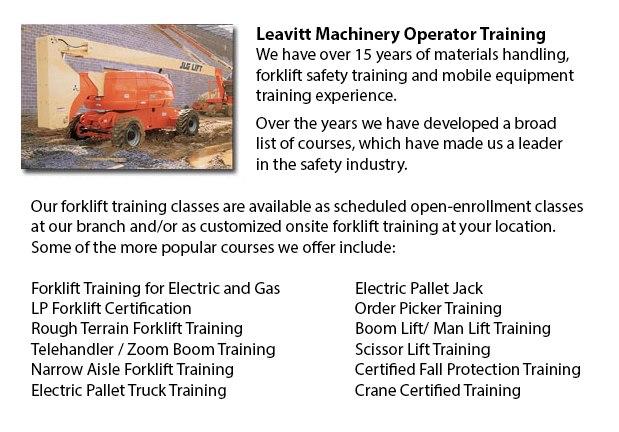
Aerial Lift Certification Fort Mcmurray - Aerial Lift Certification is for individuals who need an in-depth understanding of aerial lift safety. Inspectors and operators, maintenance workers, construction craftsmen and supervisors need to perform a certificate and training program. Federal, provincial and state rules need companies to be certified to be able to perform in-house aerial lift inspections.
Most workers who are required to perform tasks at elevated level would normally utilize the same means to get to these required heights, regardless of the type of work which has to be done. Scissor lifts and aerial lifts are the mechanized machines made use of to lift workers and equipment to elevated worksites.
Bucket trucks or cherry pickers are boom-supported aerial platforms. The main dangers connected to boom-operated platforms are tip-overs, falls and electrocutions. Certification makes sure that workers who make use of aerial lifts are correctly trained to be able to safely work the machine. Training also makes sure that workers know how to maintain aerial work platforms in accordance with the instructions of the manufacturer.
Aerial lift training certification programs would include the following: Aerial lifts that are mounted to vehicles, Boom-supported scissor lifts and aerial lifts. Trainees will know about safe operating procedures and will gain knowledge about the hazards which often lead to aerial lift accidents. They would be technically competent in the various kinds of aerial lifts, in addition to terms and components. From interpreting rated capacity charts to selecting the best aerial lift for the task, the certification program will provide workers with all that they should know in order to safely carry out their work.
Those who are assigned the task of inspecting aerial lift devices should know how to inspect booms, gears, operating mechanisms, structural parts, functions and control systems, power plants, braking systems, pins and shafts, attachments, hydraulic, pneumatic and electric components, operator aids and emergency safety devices, and that. Training will consist of the following: the inspector's role in reducing liability exposure and accidents; how to perform a pre-use, monthly and annual check; how to write inspection reports; how to apply and interpret rules about aerial lift safety standards; checklists and techniques; inspection procedures; complying with record keeping requirements; applying and understanding the three levels of aerial lift inspection; and when to remove defective aerial lifts from service.
-
Telehandler Training Fort Mcmurray
Telehandler Training Fort Mcmurray - Telehandlers or also called Telescopic handlers are very popular piece of heavy construction equipment most often utilized in agriculture and construction industries. These machines have extreme reaching capabilit... More -
Counterbalance Forklift Training Fort Mcmurray
Counterbalance Forklift Training Fort Mcmurray - Counterbalance Forklift Training courses are always in high demand. The Counterbalance forklift is a forklift that is made along with a weight that counters the balance, evenly spreading the weight of... More -
Heavy Equipment Training School Fort Mcmurray
Heavy Equipment Training School Fort Mcmurray - HEO or the heavy equipment operator courses will provide you with the knowledge and skills required in order to enter the workforce as an entry level heavy machine operator. In this 12 week course in ad... More -
Operator Safety Training, Re-Qualification Training, In-House Instructor Training in Fort McMurray
Used in just about all boat yards, industrial construction sites or warehouse operations, the forklift is a very important component in order to help pick up and transfer supplies. The reach feature of a lift truck could help improve the applications... More -
Heavy Equipment License Fort Mcmurray
Heavy Equipment License Fort Mcmurray - A heavy equipment license can be obtained by finishing a certification and preparation course at a private training school or a vocational school. This license would qualify you to operate various types of heav... More -
Boom Lift License Fort Mcmurray
Boom Lift License Fort Mcmurray - To operate an aerial boom lift, operators must be licensed through training that can be obtained utilizing both practical training and classroom sessions and by obtaining a boom lift license. Instruction must be give... More -
Skid Steer Loader Training in Fort McMurray
A skid-steer loader is actually an engine powered machine that consists of a small and rigid frame. It is outfitted along with lift arms which are used to attach to different labor saving attachments and tools. Normally, skid-steer loaders are four-w... More -
Order Picker Ticket Fort Mcmurray
Order Picker Ticket Fort Mcmurray - Order picker's enables warehouse employees to lift pallets using forks. Likewise called a stock picker, this electrically-powered equipment is like a forklift except that an order picker is likewise utilized to lif... More

Forklift Training Fort McMurray
TOLL FREE: 1-888-254-6157
Fort McMurray, Alberta
forklifttrainingfortmcmurray.com
Email Us
About Us


